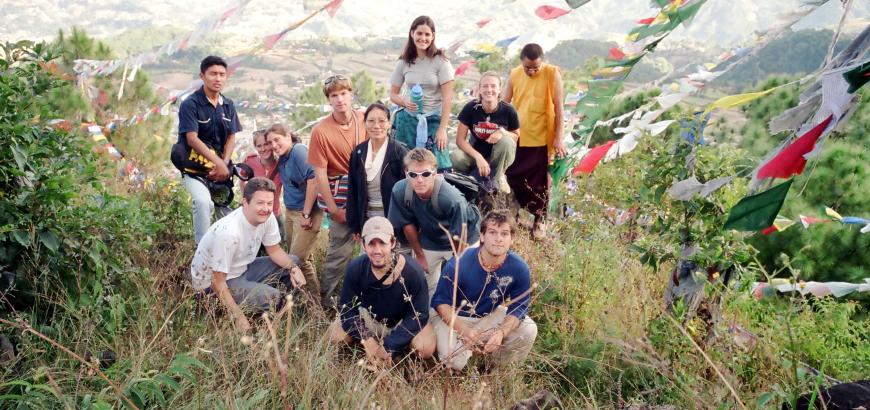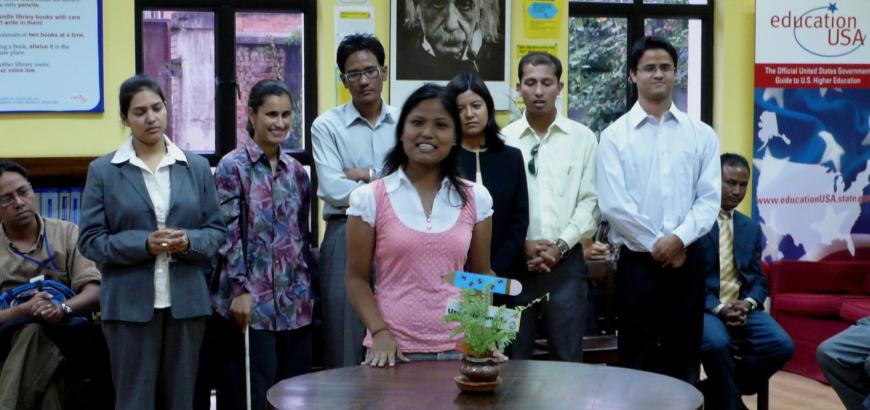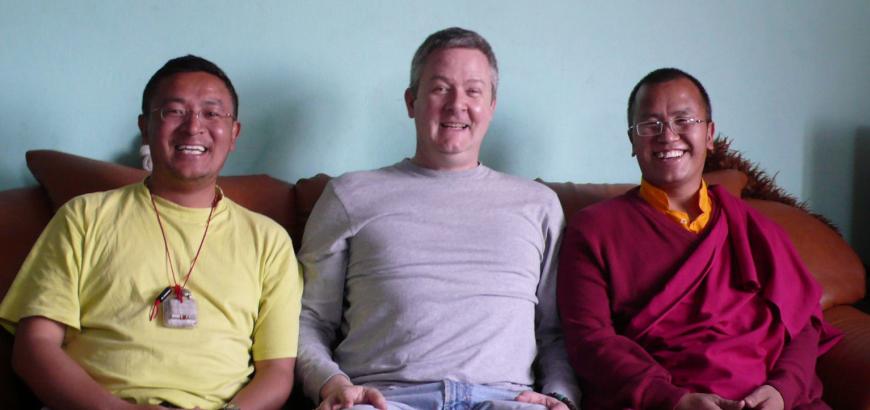Although Peter Moran (PhD in Sociocultural Anthropology, 1998) majored in anthropology as an undergraduate, it wasn’t until his junior year when he spent a semester in Nepal that he began to understand what much of the discipline was about. He realized that culture was not somewhere else, carried by “exotic” others, but right at home—if he only had eyes and ears to see and hear it in customs, beliefs, and the subtleties of language.
That study abroad experience propelled him to return to Nepal and Tibet for a year of language study following graduation. It was also the impetus to go to graduate school at the UW, and eventually to conduct Fulbright-sponsored fieldwork in Nepal (1992-94), where he explored religion, “conversion” experiences, and tourism in Kathmandu.
As a graduate student Peter loved his various teaching experiences and assumed he would pursue a teaching position. He applied for tenure-track jobs and also for a Blakemore Foundation grant to return to Nepal for ten months of field study in advanced Tibetan language. When the Blakemore grant came through—and no job offers—he happily went to Kathmandu. Halfway through his stay, the unexpected intervened. A group of faculty and administrators at Trinity College in Connecticut contacted him because they wanted to start a study abroad program in Nepal for their students.
Peter was intrigued and excited. Given the difficulties of searching for academic jobs from afar, he jumped at the opportunity to stay in Kathmandu. What he had not anticipated was how rewarding it would be to set up a program that took the most “exotic” aspects of Tibetan culture—its Buddhist monastic institutions—and put American students in the middle of these. Peter arranged for the male students to stay with monks and for the female students to stay with Buddhist nuns, thus setting the stage for genuine encounters between two populations who initially viewed each other only through images and narratives they were familiar with from film, popular literature, and hearsay.
Peter directed the Trinity program for several years and finished his book, Buddhism Observed: Travellers, Exiles and Tibetan Dharma in Kathmandu, as the Maoist war in Nepal dragged on. He gradually realized that he had little interest in returning to academia. Kathmandu had become home, and he had become a teacher, field guide, and administrator. He soon became the director of the Commission for Educational Exchange between the United States and Nepal (the Nepal Fulbright Commission). As much as he had enjoyed his time working with American students and teaching about Himalayan religion in situ, he also wanted to be part of something bilateral—where Nepalis and Tibetans could study in the US in the same way that American Fulbrighters could study in Nepal. After directing the Commission for four years, he applied for, and got, a job at the UW as director of the Office of International Programs and Exchanges (IPE).
1. Peter Moran at Taklung Gon, central Tibet.
2. Peter (in white T-shirt) with American students, and Nepali and Tibetan hosts, at Yangleshö, Nepal.
3. Young Nepali Fulbright students, just back from the US, describe their experiences to a Nepali and American audience at the Fulbright Commission in Kathmandu.
4. Peter with Sherpa friends in Kathmandu



